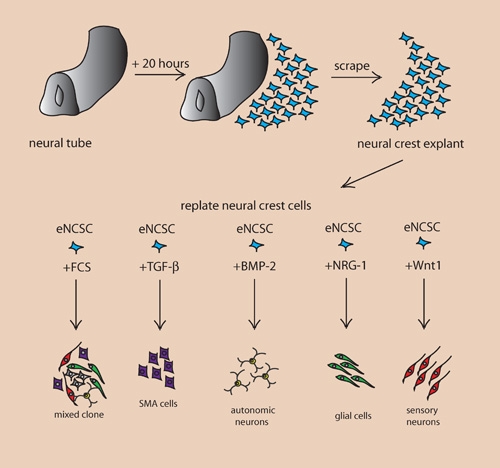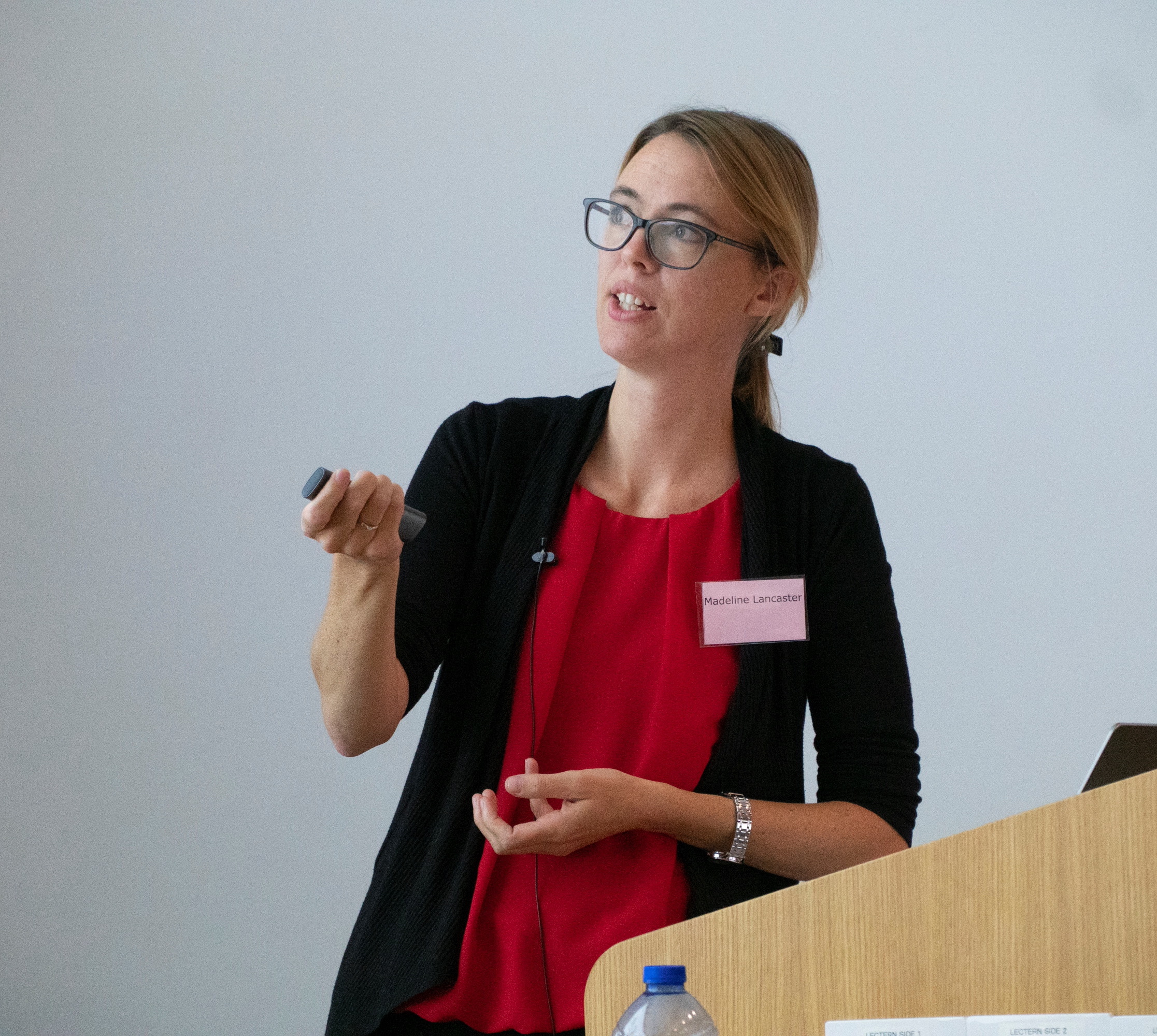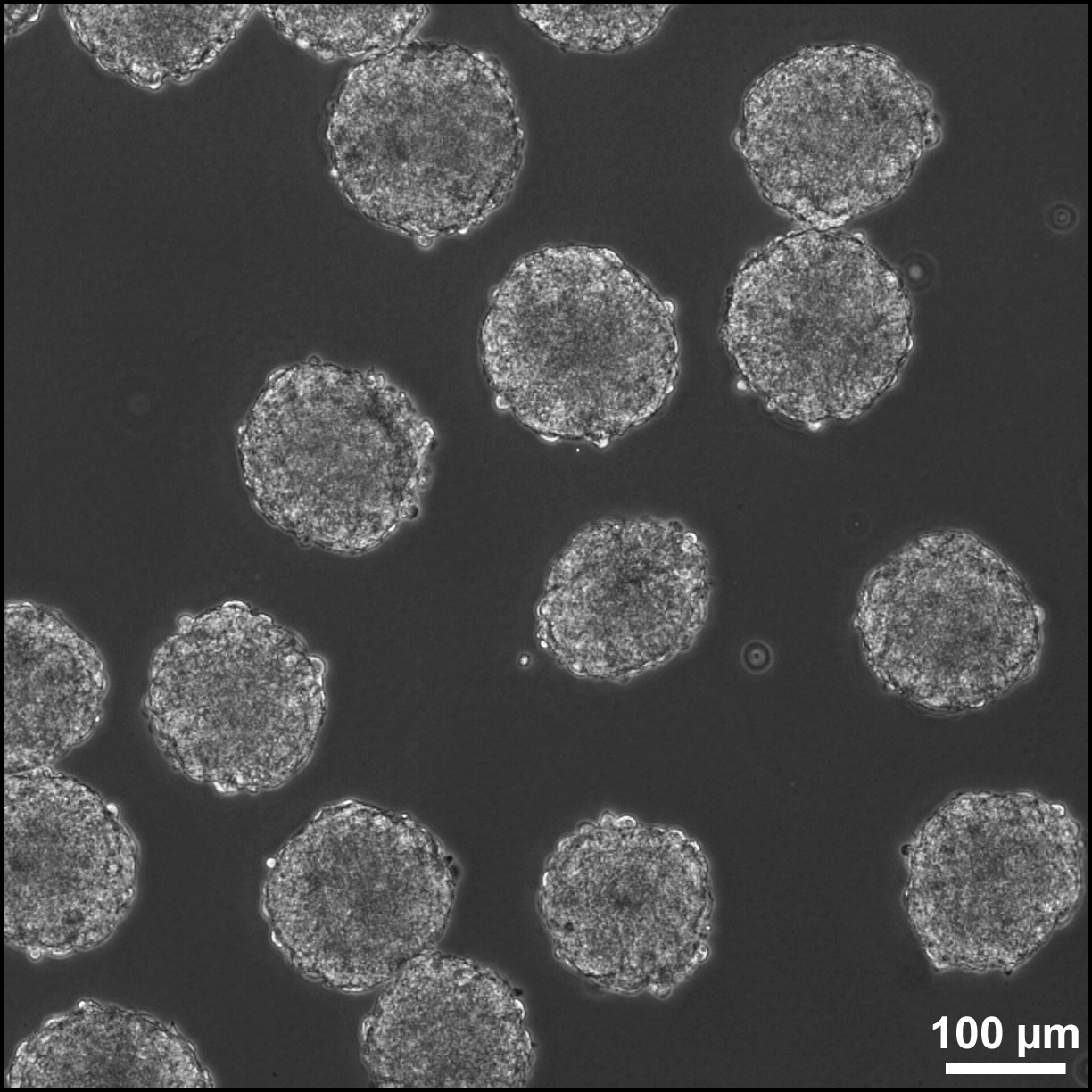|
Cerebral Organoid
A cerebral organoid, or brain organoid, describes an artificially grown, ''in vitro,'' miniature organ resembling the brain. Cerebral organoids are created by culturing pluripotent stem cells in a three-dimensional rotational bioreactor, and they develop over a course of months. The brain is an extremely complex system of heterogeneous tissues and consists of a diverse array of neurons. This complexity has made studying the brain and understanding how it works a difficult task in neuroscience, especially when it comes to neurodegenerative diseases. The purpose of creating an ''in vitro'' neurological model is to study these diseases in a more simple and variable space. This 3D model is free of many potential ''in vivo'' limitations. The varying physiology between human and other mammalian models limits the scope of study in neurological disorders. Cerebral organoids are synthesized tissues that contain several types of nerve cells and have anatomical features that recapitulate regi ... [...More Info...] [...Related Items...] OR: [Wikipedia] [Google] [Baidu] |
In Vitro
''In vitro'' (meaning in glass, or ''in the glass'') studies are performed with microorganisms, cells, or biological molecules outside their normal biological context. Colloquially called "test-tube experiments", these studies in biology and its subdisciplines are traditionally done in labware such as test tubes, flasks, Petri dishes, and microtiter plates. Studies conducted using components of an organism that have been isolated from their usual biological surroundings permit a more detailed or more convenient analysis than can be done with whole organisms; however, results obtained from ''in vitro'' experiments may not fully or accurately predict the effects on a whole organism. In contrast to ''in vitro'' experiments, ''in vivo'' studies are those conducted in living organisms, including humans, and whole plants. Definition ''In vitro'' ( la, in glass; often not italicized in English usage) studies are conducted using components of an organism that have been isolated fro ... [...More Info...] [...Related Items...] OR: [Wikipedia] [Google] [Baidu] |
Endoderm
Endoderm is the innermost of the three primary germ layers in the very early embryo. The other two layers are the ectoderm (outside layer) and mesoderm (middle layer). Cells migrating inward along the archenteron form the inner layer of the gastrula, which develops into the endoderm. The endoderm consists at first of flattened cells, which subsequently become columnar. It forms the epithelial lining of multiple systems. In plant biology, endoderm corresponds to the innermost part of the cortex ( bark) in young shoots and young roots often consisting of a single cell layer. As the plant becomes older, more endoderm will lignify. Production The following chart shows the tissues produced by the endoderm. The embryonic endoderm develops into the interior linings of two tubes in the body, the digestive and respiratory tube. Liver and pancreas cells are believed to derive from a common precursor. In humans, the endoderm can differentiate into distinguishable organs after 5 week ... [...More Info...] [...Related Items...] OR: [Wikipedia] [Google] [Baidu] |
George M
''George M!'' is a Broadway musical based on the life of George M. Cohan, the biggest Broadway star of his day who was known as "The Man Who Owned Broadway." The book for the musical was written by Michael Stewart, John Pascal, and Francine Pascal. Music and lyrics were by George M. Cohan himself, with revisions for the musical by Cohan's daughter, Mary Cohan. The story covers the period from the late 1880s until 1937 and focuses on Cohan's life and show business career from his early days in vaudeville with his parents and sister to his later success as a Broadway singer, dancer, composer, lyricist, theatre director and producer. The show includes such Cohan hit songs as "Give My Regards To Broadway", "You're a Grand Old Flag", and "Yankee Doodle Dandy." Productions The musical opened on Broadway at the Palace Theatre on April 10, 1968 and closed on April 26, 1969 after 433 performances and 8 previews. The show was produced by David Black and directed and choreographed by ... [...More Info...] [...Related Items...] OR: [Wikipedia] [Google] [Baidu] |
Madeline Lancaster
Madeline Lancaster is an American developmental biologist studying neurological development and diseases of the brain. Lancaster is a group leader at the Medical Research Council (MRC) Laboratory of Molecular Biology in Cambridge, UK. Education Lancaster was an undergraduate student at Occidental College in Los Angeles from 2000-2004 where she studied biochemistry. She then went on to complete a PhD with Joseph Gleeson at the University of California, San Diego in 2010. Career and research Lancaster conducted her post-doctoral work in the lab of Jürgen Knoblich at the Institute of Molecular Biotechnology in Vienna, Austria. This work was supported by fellowships from EMBO, the Helen Hay Whitney Foundation and Marie Sklodowska-Curie Actions. During this time Lancaster worked on developing the technology of cerebral organoids. In 2015 Lancaster joined the Cell Biology division at the LMB, where she currently leads a research group studying the biological processes of human b ... [...More Info...] [...Related Items...] OR: [Wikipedia] [Google] [Baidu] |
Doubling Time
The doubling time is the time it takes for a population to double in size/value. It is applied to population growth, inflation, resource extraction, consumption of goods, compound interest, the volume of malignant tumours, and many other things that tend to grow over time. When the relative growth rate (not the absolute growth rate) is constant, the quantity undergoes exponential growth and has a constant doubling time or period, which can be calculated directly from the growth rate. This time can be calculated by dividing the natural logarithm of 2 by the exponent of growth, or approximated by dividing 70 by the percentage growth rate (more roughly but roundly, dividing 72; see the rule of 72 for details and derivations of this formula). The doubling time is a characteristic unit (a natural unit of scale) for the exponential growth equation, and its converse for exponential decay is the half-life. For example, given Canada's net population growth of 0.9% in the year 2006, di ... [...More Info...] [...Related Items...] OR: [Wikipedia] [Google] [Baidu] |
SMAD (protein)
Smads (or SMADs) comprise a family of structurally similar proteins that are the main signal transducers for receptors of the transforming growth factor beta (TGF-B) superfamily, which are critically important for regulating cell development and growth. The abbreviation refers to the homologies to the ''Caenorhabditis elegans'' SMA ("small" worm phenotype) and MAD family ("Mothers Against Decapentaplegic") of genes in Drosophila. There are three distinct sub-types of Smads: receptor-regulated Smads ( R-Smads), common partner Smads (Co-Smads), and inhibitory Smads ( I-Smads). The eight members of the Smad family are divided among these three groups. Trimers of two receptor-regulated SMADs and one co-SMAD act as transcription factors that regulate the expression of certain genes. Sub-types The R-Smads consist of Smad1, Smad2, Smad3, Smad5 and Smad8/9, and are involved in direct signaling from the TGF-B receptor. Smad4 is the only known human Co-Smad, and has the role of partneri ... [...More Info...] [...Related Items...] OR: [Wikipedia] [Google] [Baidu] |
Matrigel
Matrigel is the trade name for the solubilized basement membrane matrix secreted by Engelbreth-Holm-Swarm (EHS) mouse sarcoma cells produced by Corning Life Sciences. Matrigel resembles the laminin/collagen IV-rich basement membrane extracellular environment found in many tissues and is used by cell biologists as a substrate (basement membrane matrix) for culturing cells. Cell culture A common laboratory procedure is to dispense small volumes of chilled (4 °C) liquid Matrigel onto plastic tissue culture labware. When incubated at 37 °C (body temperature) the Matrigel proteins polymerize (solidify) producing a recombinant basement membrane that covers the labware's surface. Cells cultured on Matrigel demonstrate complex cellular behavior that is otherwise difficult to observe under laboratory conditions. For example, endothelial cells create intricate spiderweb-like networks on Matrigel-coated surfaces but not on plastic surfaces. Such networks are highly suggestive of ... [...More Info...] [...Related Items...] OR: [Wikipedia] [Google] [Baidu] |
Neuroectoderm
Neuroectoderm (or neural ectoderm or neural tube epithelium) consists of cells derived from ectoderm. Formation of the neuroectoderm is first step in the development of the nervous system. The neuroectoderm receives bone morphogenetic protein-inhibiting signals from proteins such as noggin, which leads to the development of the nervous system from this tissue. Histologically, these cells are classified as pseudostratified columnar cells. After recruitment from the ectoderm, the neuroectoderm undergoes three stages of development: transformation into the neural plate, transformation into the neural groove (with associated neural folds), and transformation into the neural tube. After formation of the tube, the brain forms into three sections; the hindbrain, the midbrain, and the forebrain. The types of neuroectoderm include: *Neural crest ** pigment cells in the skin **ganglia of the autonomic nervous system **dorsal root ganglia. **facial cartilage ** aorticopulmonary septum of ... [...More Info...] [...Related Items...] OR: [Wikipedia] [Google] [Baidu] |
Embryoid Body
Embryoid bodies (EBs) are three-dimensional aggregates of pluripotent stem cells. EBs are differentiation of human embryonic stem cells into embryoid bodies comprising the three embryonic germ layers. Background The pluripotent cell types that comprise embryoid bodies include embryonic stem cells (ESCs) derived from the blastocyst stage of embryos from mouse (mESC), primate, and human (hESC) sources. Additionally, EBs can be formed from embryonic stem cells derived through alternative techniques, including somatic cell nuclear transfer or the reprogramming of somatic cells to yield induced pluripotent stem cells (iPS). Similar to ESCs cell culture, cultured in monolayer formats, ESCs within embryoid bodies undergo differentiation and cell specification along the three germ layer, germ lineages – endoderm, ectoderm, and mesoderm – which comprise all somatic (biology), somatic cell types. In contrast to monolayer cultures, however, the spheroid structures that are ... [...More Info...] [...Related Items...] OR: [Wikipedia] [Google] [Baidu] |
Circulatory System
The blood circulatory system is a system of organs that includes the heart, blood vessels, and blood which is circulated throughout the entire body of a human or other vertebrate. It includes the cardiovascular system, or vascular system, that consists of the heart and blood vessels (from Greek ''kardia'' meaning ''heart'', and from Latin ''vascula'' meaning ''vessels''). The circulatory system has two divisions, a systemic circulation or circuit, and a pulmonary circulation or circuit. Some sources use the terms ''cardiovascular system'' and ''vascular system'' interchangeably with the ''circulatory system''. The network of blood vessels are the great vessels of the heart including large elastic arteries, and large veins; other arteries, smaller arterioles, capillaries that join with venules (small veins), and other veins. The Closed circulatory system, circulatory system is closed in vertebrates, which means that the blood never leaves the network of blood vessels. Some in ... [...More Info...] [...Related Items...] OR: [Wikipedia] [Google] [Baidu] |
Epidermis (skin)
The epidermis is the outermost of the three layers that comprise the skin, the inner layers being the dermis and hypodermis. The epidermis layer provides a barrier to infection from environmental pathogens and regulates the amount of water released from the body into the atmosphere through transepidermal water loss. The epidermis is composed of multiple layers of flattened cells that overlie a base layer (stratum basale) composed of columnar cells arranged perpendicularly. The layers of cells develop from stem cells in the basal layer. The human epidermis is a familiar example of epithelium, particularly a stratified squamous epithelium. The word epidermis is derived through Latin , itself and . Something related to or part of the epidermis is termed epidermal. Structure Cellular components The epidermis primarily consists of keratinocytes ( proliferating basal and differentiated suprabasal), which comprise 90% of its cells, but also contains melanocytes, Langerhans c ... [...More Info...] [...Related Items...] OR: [Wikipedia] [Google] [Baidu] |
Dental Enamel
Tooth enamel is one of the four major tissues that make up the tooth in humans and many other animals, including some species of fish. It makes up the normally visible part of the tooth, covering the crown. The other major tissues are dentin, cementum, and dental pulp. It is a very hard, white to off-white, highly mineralised substance that acts as a barrier to protect the tooth but can become susceptible to degradation, especially by acids from food and drink. Calcium hardens the tooth enamel. In rare circumstances enamel fails to form, leaving the underlying dentin exposed on the surface. Features Enamel is the hardest substance in the human body and contains the highest percentage of minerals (at 96%),Ross ''et al.'', p. 485 with water and organic material composing the rest.Ten Cate's Oral Histology, Nancy, Elsevier, pp. 70–94 The primary mineral is hydroxyapatite, which is a crystalline calcium phosphate. Enamel is formed on the tooth while the tooth develops within th ... [...More Info...] [...Related Items...] OR: [Wikipedia] [Google] [Baidu] |






